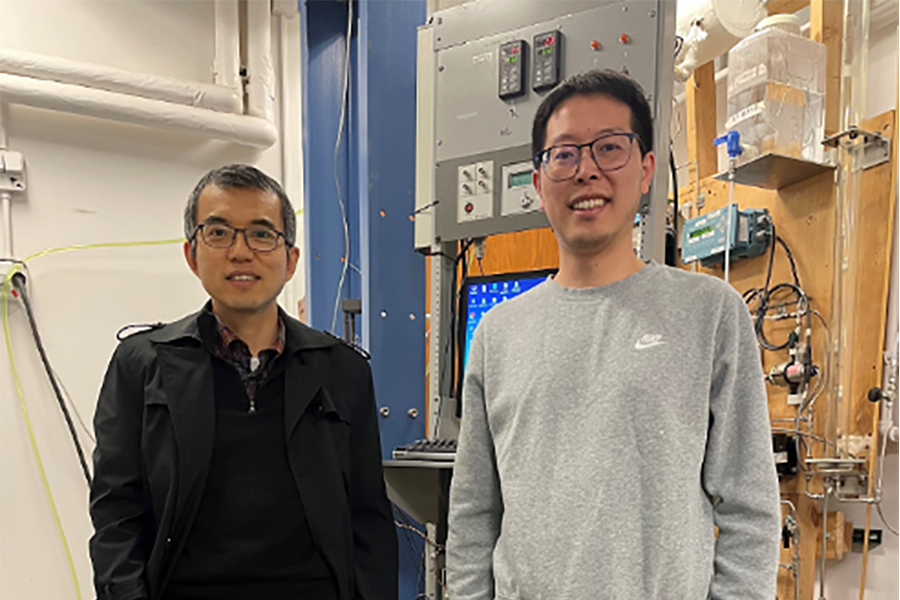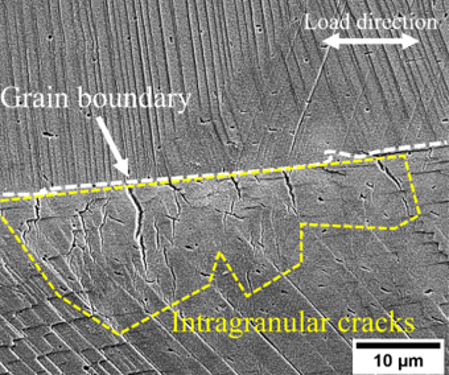Nuclear Engineering Team Wins the Best Paper Award of 2023 from Journal of Nuclear Materials

The paper is titled, “Intragranular irradiation-assisted stress corrosion cracking (IASCC) of 316L stainless steel made by laser direct energy deposition additive manufacturing: Delta ferrite-dislocation channel interaction,” published in vol. 577, p. 154305. Jingfan Yang is the lead author with Xiaoyuan Lou as the corresponding author of the work.
Journal of Nuclear Materials is the highest scientific journal covering nuclear material related topics. The award will be presented at the 2024 Nuclear Materials Conference (NuMat 2024) in Singapore, and as an invited talk at the conference. The best paper award recognition by the journal underscores its significance in the realm of advanced manufacturing for nuclear reactors. By shedding light on the intricate interplay of microstructure and material properties, it paves the way for informed decision-making and the development of robust manufacturing standards. In an era of rapid technological advancement, such insights are invaluable in shaping the future of nuclear energy.
The pursuit of advanced manufacturing techniques has become a focal point in recent years. With the potential to revolutionize the fabrication of reactor components, additive manufacturing (AM) methods like laser direct energy deposition (DED) offer unprecedented flexibility and efficiency to produce large-size reactor components. “For example, NASA is also working through similar processes to make rocket components including printing a whole rocket,” said Lou. “We can do the same thing for the next-generation nuclear reactor.”
However, structural materials going to nuclear reactors face a highest level of regulation by standard/code bodies and Nuclear Regulatory Commission (NRC), which not only include the type of materials, but also the way to manufacturing them. “Nuclear reactor is the engineering product that requires the longest service life, in many cases 60-80 years,” said Lou. “Understanding the long-term material behavior in reactor environments, especially degradation behavior, are crucial.”
The heart of the research lies in understanding the complexities around irradiation assisted stress corrosion cracking (IASCC), a well-known material challenge in nuclear reactor operation. IASCC manifests as a result of multiple factors including high temperatures, corrosion, radiation damage, and complex applied stress during reactor operation.
Traditionally, this phenomenon has been observed predominantly at grain boundaries. However, with the start of additive manufacturing, microstructural changes introduce new intricacies. 316L stainless steel fabricated through laser DED additive manufacturing exhibits a shift in the location of crack initiation, moving from grain boundaries to within grains. This phenomenon, termed intragranular cracking, presents a novel challenge and demands a new approach to mitigation.
Through meticulous experimentation and analysis, this team of researchers, uncovered a crucial factor contributing to intragranular cracking: the presence of delta ferrite precipitates. Delta ferrite particles play a beneficial role in improving the mechanical properties of the material by hindering dislocation movement, redistributing strain away from grain boundaries, and consequently lowering the risk of grain boundary cracking.
The implications of this research extend beyond theoretical understanding. As nuclear industries increasingly turn to additive manufacturing for component fabrication, the findings underscore the necessity for comprehensive risk assessment and mitigation strategies.
Looking ahead, the research team aims to further validate their findings across a broader spectrum of additive manufacturing conditions. The work is ongoing and supported by US Nuclear Regulatory Commission, which underscores the commitment to ensuring the safety and longevity of nuclear infrastructure.

